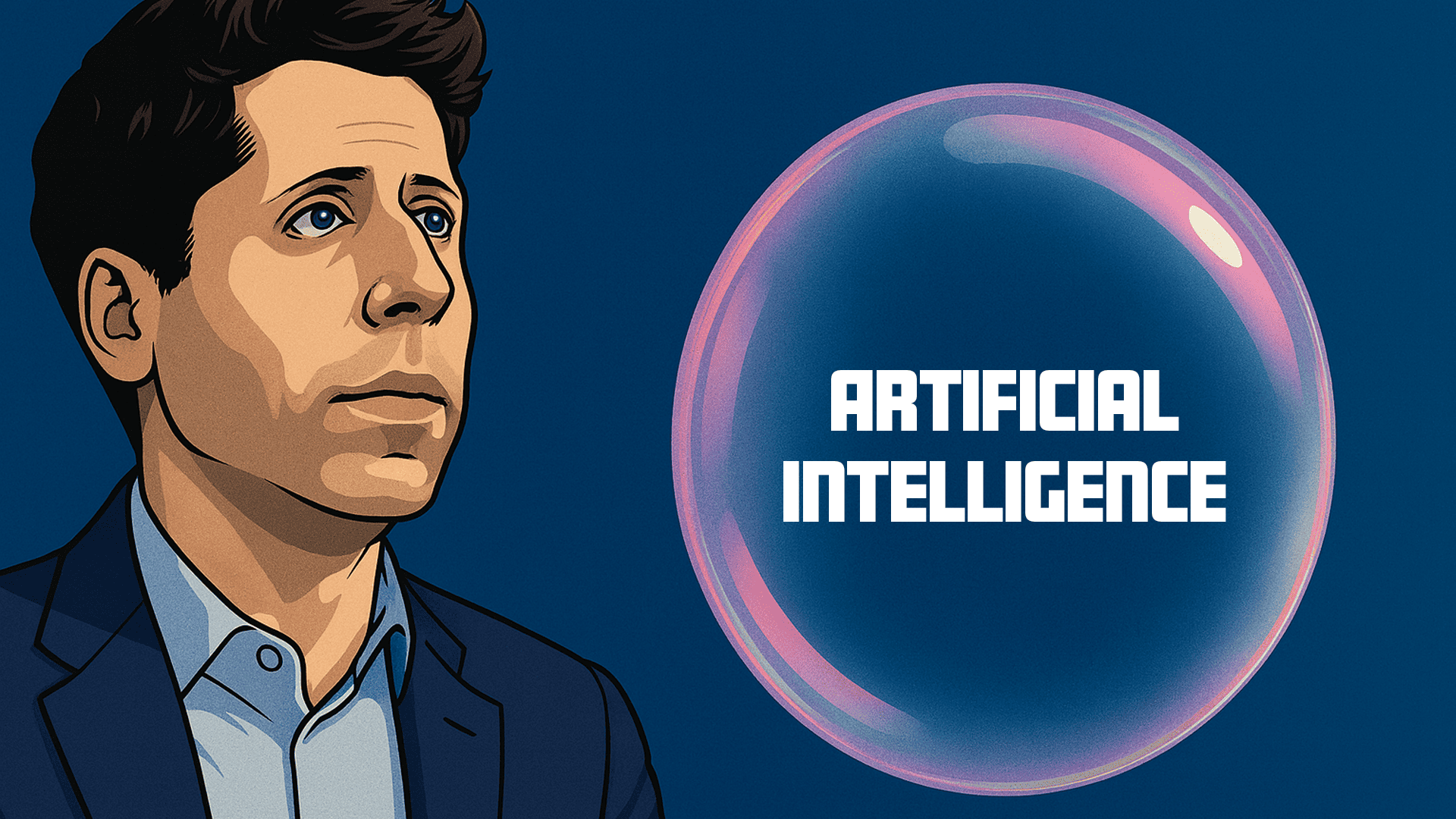Artificial Intelligence (AI) has dominated headlines in 2025. From generative models to enterprise automation, investment dollars are pouring into AI startups and infrastructure at record speed. But not everyone is convinced the hype will last. Sam Altman, CEO of OpenAI, recently warned that we may already be entering an AI bubble.
His comments echo the dot-com era: huge expectations, massive investment and an uncertain path to profitability. The big question now is whether AI’s rapid rise represents sustainable growth, or inflated valuations waiting to burst.
What Did Sam Altman Actually Say?
In a private conversation with journalists earlier this month, Altman was direct:
“Are we in a phase where investors as a whole are overexcited about AI? My opinion is yes.”
He acknowledged that while AI is a real and transformative technology, overenthusiastic capital has created unsustainable expectations. Altman compared today’s excitement to the late 1990s dot-com bubble, when “kernels of truth” about the internet led to reckless investment and inevitable losses.
His stark warning:
- “Someone is going to lose a phenomenal amount of money.”
- Bubbles often form around real innovations, but valuations don’t always match reality. Why the AI Bubble Talk Is Heating Up
Several signs point to overheating in the AI sector:
1. Corporate Adoption Challenges A recent MIT study revealed that 95% of generative AI projects fail to produce revenue. Many pilots never scale beyond experimentation.
2. Skyrocketing Startup Valuations AI companies are raising at billion-dollar valuations with little to no revenue. Investors fear missing out, just as they did in the crypto rush and the dot-com boom.
3. Market Saturation With every major tech player announcing AI products, the space is increasingly crowded. Differentiation is shrinking, while costs for compute and data remain high.
Why This Bubble Is Different (and Why It Isn’t)
Altman emphasized that AI is not a fad. Unlike crypto or other speculative markets, the core technology is transformative. AI models are already reshaping healthcare, finance, and education.
However, history suggests that when capital floods in faster than revenue catches up, corrections are inevitable. Just like the dot-com crash wiped out countless startups but paved the way for Amazon and Google, an AI market correction could thin the herd while leaving stronger companies standing.
What This Means for Investors and Startups
- Investors: Expect volatility. Some firms will collapse under inflated expectations, but long-term players in infrastructure (compute, chips, cloud services) may weather the storm.
- Startups: Focus on sustainable revenue models. Chasing hype without clear ROI is risky when capital dries up.
- Enterprises: Experiment, but measure outcomes. Avoid chasing every flashy demo and instead target AI applications that reduce costs or drive measurable growth.
Bubble or Breakthrough?
Sam Altman’s warning doesn’t mean AI is doomed. On the contrary, it confirms AI’s massive potential, but also highlights the dangers of irrational hype.
Just as the internet survived the dot-com crash and changed the world, AI will likely persist beyond any bubble burst. The winners will be those who focus on real-world value, not just investor enthusiasm.

